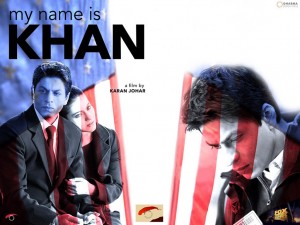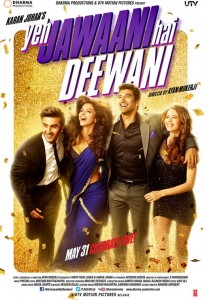 On May 3, 1913, India’s first film Raja Harischandra was screened in Mumbai. Since then the industry has emerged into one of the largest in the world, with around 1,000 films produced every year and 2.7 billion movie tickets being sold in India alone.
On May 3, 1913, India’s first film Raja Harischandra was screened in Mumbai. Since then the industry has emerged into one of the largest in the world, with around 1,000 films produced every year and 2.7 billion movie tickets being sold in India alone.
Over the years there have been some groundbreaking films capturing the imagination of billions of people across the globe. Picking out some of his top films, senior lecturer in film and media studies at the University of Manchester, Dr Rajinder Dudrah’s first choice was Guru Dutt’s Pyaasa. He added: “It boldly and artistically puts centre stage the issues and ideals of truth, honesty and democratic living amidst a new and emerging independent India, in which rich and poor began to be exacerbated and corruption and lies begin to take root.”
Mother India featuring Nargis also made the list for the representation of women in Indian society, especially in rural communities where they are often challenged and are forced to compete for a voice and their own space. His final selection was Sholay. “It is the ultimate masala film with bags of dishoom action and spectacle and it also has endless repeat value.”

According to Rachel Dwyer, professor of Indian cultures and cinema at SOAS, University of London, Dilwale Dulhaniya Le Jayenge, which released in 1995, is often reckoned to be the first Bollywood film as it is a truly transitional film in its content. She added: “Its importance overseas and as part of a wider range of media practices is what makes it so great. It also set the pace for a new style of films within Yash Raj Films as well as Dharma Productions and set Shah Rukh Khan as a major overseas star.”
Notorious for producing romances, the Hindi film industry has certainly evolved over the years, dealing with more sensitive issues. Films such as Kabhi Alvida Naa Kehna and Murder were based on the issue of infidelity, whereas My Brother Nikhil, Fire and Bombay Talkies pushed the boundaries when it comes to dealing with sexuality. Though they are still few and far between, there are more women-centric roles being written such as Vidya Balan’s characters in both Kahaani and The Dirty Picture and filmmakers are also venturing into the sci-fi genre with Krishh and Ra.One.
When asked what the biggest change in the industry has been over the past 100 years, Professor Dwyer said: “The coming of sound seems to be one of the major events as it raised the issue of which language to use and what form of that language, as well as allowing songs to be included in the films.”
 Dr Dudrah added: “More and more people around the world have become aware of Bollywood as a film industry as part of Indian cinema more widely. Bollywood or Hindi cinema has always been global from its inception but the last 15 to 20 years has seen a rise in the attention that it has received in the international media landscape. It has established itself as a serious and unique contender of telling stories through the audio and visual medium in a specific Indian and South Asian way; whereas prior to this it was often ridiculed as trivia or kitsch.”
Dr Dudrah added: “More and more people around the world have become aware of Bollywood as a film industry as part of Indian cinema more widely. Bollywood or Hindi cinema has always been global from its inception but the last 15 to 20 years has seen a rise in the attention that it has received in the international media landscape. It has established itself as a serious and unique contender of telling stories through the audio and visual medium in a specific Indian and South Asian way; whereas prior to this it was often ridiculed as trivia or kitsch.”
Bollywood films are regularly entering the top ten in the UK film box office. When Shah Rukh Khan’s film My Name Is Khan released in 2010 it went straight to number six grossing more than £936,000 in its opening weekend. More recently Yeh Jawaani Hai Deewani secured the number nine spot in the UK film box office chart in its opening weekend, grossing £408.491. Figures from the British Film Institute (BFI) indicate that Hindi continues to be the top non-English language at the box office (figures taken from 2010).
More recently Yeh Jawaani Hai Deewani secured the number nine spot in the UK film box office chart in its opening weekend, grossing £408.491. Figures from the British Film Institute (BFI) indicate that Hindi continues to be the top non-English language at the box office (figures taken from 2010).
Discussing the industry’s growing popularity with NRI audiences, Professor Dwyer said: “The overseas South Asian audience enjoys the private world of romance and family in the films. The music remains popular and the fashion is much copied for big events such as weddings. Non-South Asian audiences like the romance. Shah Rukh Khan’s German fans for example, think that no other stars in any cinema are as romantic as he is. The films bring out every element of romance.”
Summarising the last 100 years, Dr Dudrah said: “Growth, reflection, and development at an international scale, (has all come about) especially as now the Hollywood studios are very interested in co-productions with Indian companies and production houses.”





